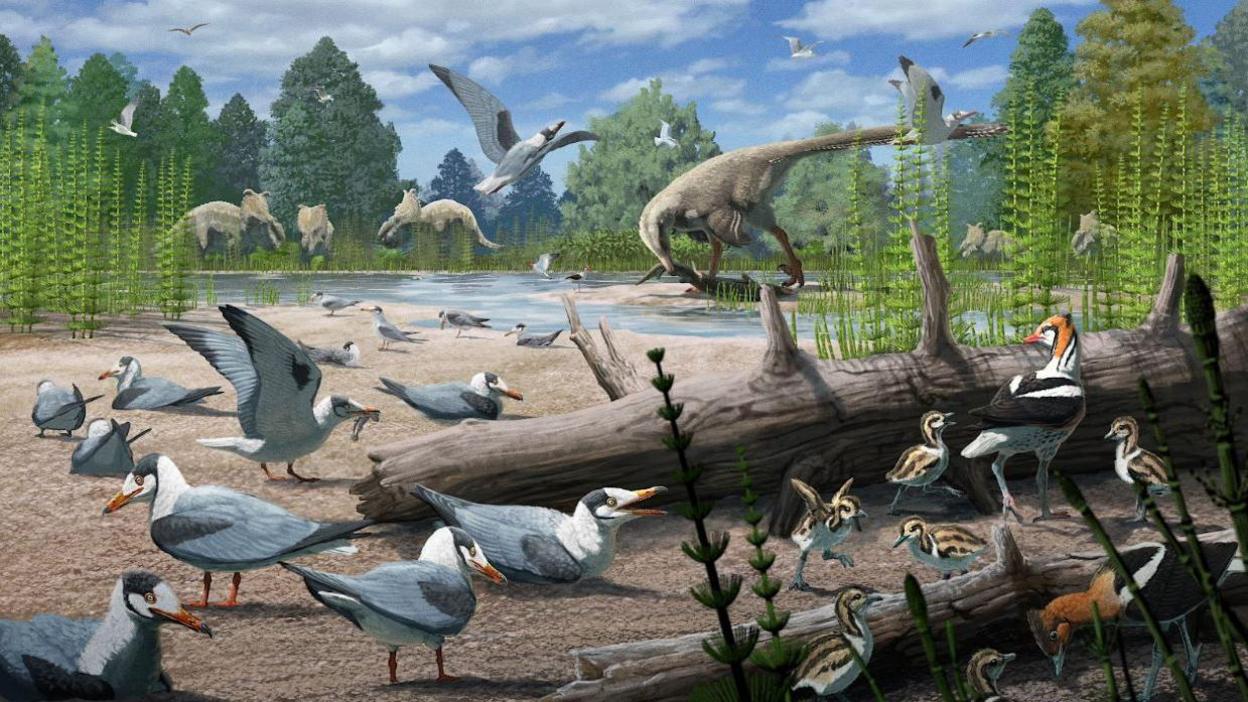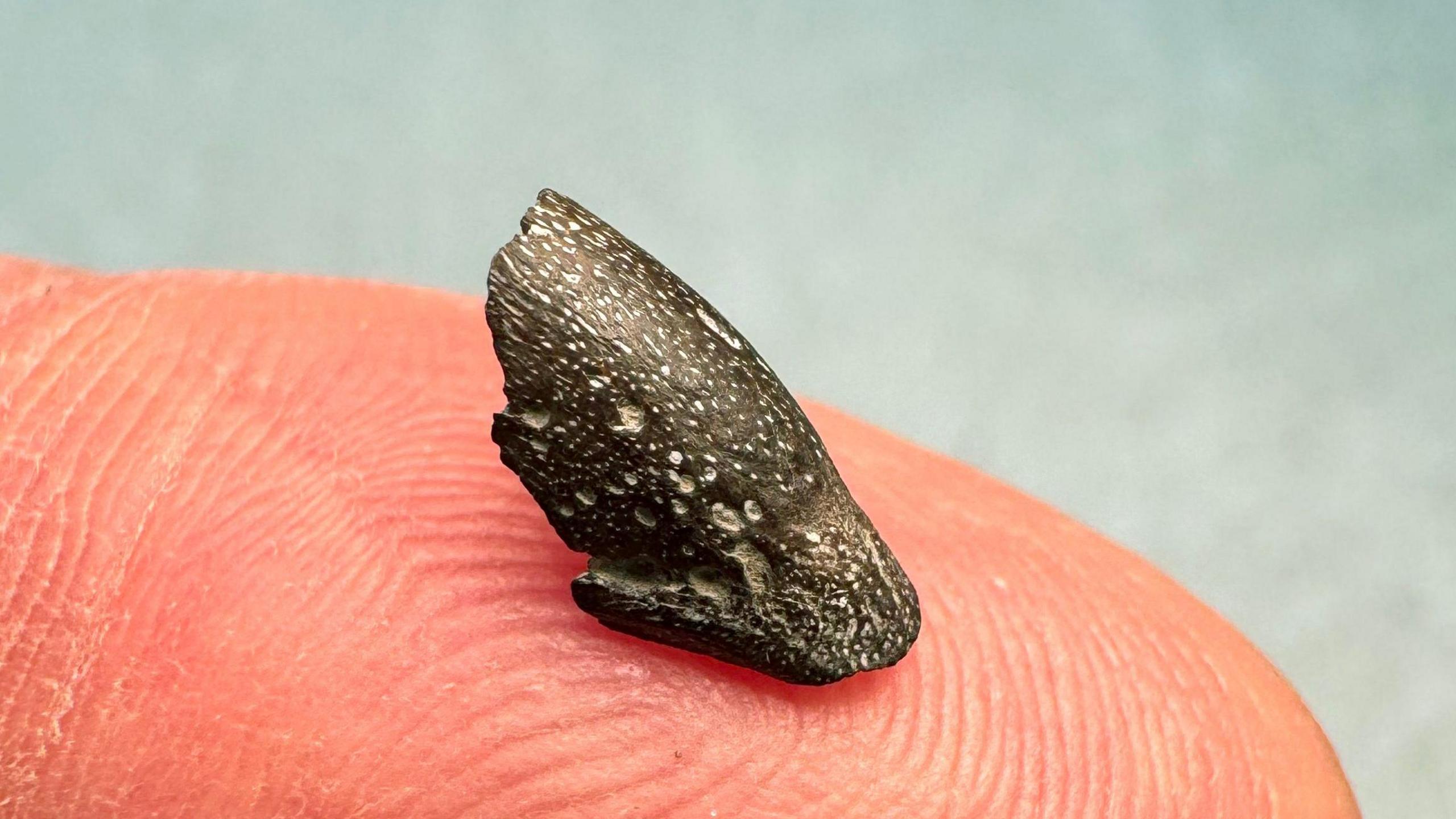Birds lived in the Arctic during the time of the dinosaurs

- Published
Experts have uncovered the earliest evidence of birds nesting in polar regions.
A new study has found that they were raising their young in the Arctic seventy-three million years ago.
That's at the same time and in the same place dinosaurs roamed.
Scientists say their findings show that birds were living in the area 30 million years earlier than previously thought.
More like this
Seven-year-old finds Jurassic fossils in his garden
- Published27 April
Fossil of giant 'sea dragon' found
- Published7 May
What did scientists discover?

Scientists recovered more than fifty fossils including this tip of a bird beak
The international team was led by the University of Alaska Fairbanks in the United States and also included the University of Reading in the UK.
They took took a close look at more than fifty tiny fossilised bones and teeth recovered from an Alaskan excavation site.
They were collected from the Prince Creek Formation in the US state of Alaska, an area known for its dinosaur fossils.
Experts identified a number of different types of birds - including diving birds, gull-like birds and also several kinds that are similar to modern ducks and geese.
Dr Jacob Gardner from the University of Reading, a co-author on the study, said: "For the first time, we determined the identities of large numbers of fossils using high-resolution scans and the latest computer tools, revealing an enormous diversity of birds in this ancient Arctic ecosystem."
Lauren Wilson, lead author of the study, explained the importance of their discovery.
"Finding bird bones from the Cretaceous [period] is already very rare. To find baby bird bones is almost unheard of. That is why these fossils are significant.
"Birds have existed for 150 million years. For half of the time they have existed, they have been nesting in the Arctic," she added.
